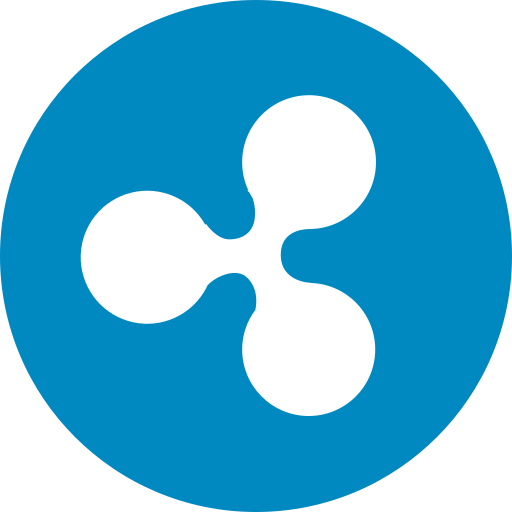Table of contents

Introduction to DeFi Advertising Networks
In the world of decentralized finance, advertising networks are reshaping how projects reach users. An advertising network for decentralized finance is a platform that connects DeFi apps, wallets, and protocols with advertisers and their campaigns. It helps DeFi teams promote new features, liquidity events, or token launches without relying on traditional cookie based tracking. Think of it as Google Ads for crypto, but built for DeFi with privacy and on chain signals in mind.
In simple terms, this ecosystem acts as a bridge between product teams in crypto and the people who want to learn about or use their products. It uses consent based data and on chain signals to respect privacy while still delivering relevant messages. This section lays the groundwork by explaining the core ideas, why this niche matters, and what makes DeFi ad networks different from regular ad networks.
- Definition and scope - An advertising network for decentralized finance, i.e. a marketplace and infrastructure that powers ad impressions across DeFi apps, wallets, and protocols. It uses consent based data and on chain signals rather than cookies to target audiences.
- Why it matters - DeFi users value privacy, speed, and permissioned access. An ad network for decentralized finance helps projects reach relevant users while preserving trust and a smooth user experience.
- Core components - A DSP (demand side platform) to buy ads, an SSP (supply side platform) to offer inventory, and a data layer that analyzes on chain activity such as token holdings or wallet interactions to improve targeting.
- Typical formats - In app banners, sponsored liquidity events, native promotions inside wallets, and cross chain notices.
- Tips for success - Align campaigns with DeFi user behavior, ensure transparent measurement, and keep privacy in focus.
Use cases for an advertising network for decentralized finance include promoting new decentralized protocols, driving liquidity for liquidity pools, and educating users about security best practices. The right network acts like a skilled matchmaker, pairing high quality DeFi projects with users who are genuinely interested in that niche. As you explore further, you will see how the architecture, data practices, and governance models come together to create a transparent and effective advertising experience in the DeFi space.

How Decentralized Finance Shapes Ad Infrastructure
Decentralized finance, or DeFi, has moved beyond the world of lending and trading. It introduces programmable rules and open ledgers that anyone can inspect. When these ideas meet advertising, they give birth to an advertising network for decentralized finance that can operate without a single gatekeeper. In simple terms, DeFi makes the flow of money, data and attention more verifiable and fair.
Ad infrastructure today relies on a mix of centralized platforms such as ad servers, demand side platforms or DSPs, and supply side platforms or SSPs. A DeFi approach replaces or augments these pieces with smart contracts, open data records and token driven incentives. Imagine a public ledger where every impression, click or view is logged in a secure, tamper-proof way. That is the promise of combining DeFi with ad tech.
A smart contract is a self-executing program that lives on a blockchain. It stores rules like price, timing and payout conditions and runs automatically when those rules are met. No humans are needed to approve every payment. This reduces delays and the risk of someone changing terms after the fact.
For example, a campaign might place funds in escrow. Once an oracle confirms that a valid impression occurred, the smart contract releases payment to the publisher and sends a share to the platform treasury. If no impression is verified, funds stay in escrow or are returned to the advertiser per the contract terms.
Oracles are trusted data feeds that bridge off-chain events to the blockchain. In ad networks they can verify conversions, viewability, or fraud signals supplied by independent observers. This is crucial because blockchains cannot directly observe what happens on a publisher's site. Oracles provide the necessary bridge to real world metrics while preserving the integrity of the contract.
Tokenomics describes how tokens are minted, distributed and used within the system. In an advertising network for decentralized finance, tokens can reward participants for quality traffic, for reporting accuracy, and for governance votes. Advertisers might stake tokens to bid for premium placements; publishers earn tokens for delivering verified impressions; and token holders vote on protocol upgrades, fee structures, or new measurement rules. The result is a self-regulated market where participants have skin in the game.
Governance tokens allow a community to steer the network. With open source style governance, changes are proposed, debated and approved by token holders. This contrasts with traditional ad networks where a single company makes most decisions. The democratic approach can speed up experimentation and reduce hidden biases in ad delivery.
Measurement in a DeFi ad network must balance transparency with user privacy. While the ledger records impressions and payments, user identifiers can be privacy preserved using techniques like consent aware identifiers or zero knowledge proofs. Think of it as a safe ledger that shows what happened without exposing who saw what, unless the user explicitly agrees.
Consider a pilot project where a small publisher network runs campaigns funded by a DAO. Advertisers deposit funds, set targets, and allow the contract to distribute payments automatically based on observed views and engagement. The result is lower fraud risk, faster payouts, and more direct alignment between advertisers and publishers.
This vision faces practical hurdles. Oracles must be reliable, and networks must scale to handle millions of transactions. Gas fees and transaction times on public blockchains can affect economics. Onboarding brands used to centralized dashboards takes time. Regulation awaits as well, especially around advertising disclosures and token markets.
In short, DeFi reshapes ad infrastructure by replacing trusted middlemen with transparent, programmable agreements. It invites a different kind of collaboration between advertisers, publishers and users, built on trust rather than opaque contracts. In the next section we will explore design patterns and technical choices for building such an advertising network for decentralized finance.

Core Features and Technologies Behind DeFi Ad Networks
A well designed advertising network for decentralized finance combines transparency, trust, and seamless interactions between advertisers, publishers, and users. The goal is to run ads in a way that is censorship resistant, verifiably fair, and easy to integrate with wallets and smart contracts. Below you will find the core features and the technologies that power them, explained in simple terms with the professional terms unpacked.
Key concepts in this space include on-chain auctions, tokenized incentives, privacy preserving measurement, and cross-chain compatibility. If you think of traditional ad networks as a central broker, a DeFi advertising network acts like a programmable marketplace where rules, payments, and audits are written in code and stored on a blockchain. This makes operations auditable, predictable, and open to anyone who follows the standards.
- Decentralized inventory and supply transparency - Publishers and applications can offer ad slots as tokenized assets. This inventory is visible on-chain, so advertisers know what is available without relying on a central directory.
- On-chain auctions and settlements - Bids and ad allocations run through smart contracts. Winners pay and publishers receive funds automatically, creating a trustless flow from advertiser to publisher.
- Privacy preserving measurement and attribution - Ad performance data can be collected in a privacy friendly way, using cryptographic proofs or consented data, reducing the need to track individuals across sites.
- Tokenized incentives and governance - Tokens can reward participation, enable revenue sharing, and allow token holders to vote on protocol upgrades. This aligns incentives across advertisers, publishers, and users.
- Interoperability and cross-chain support - Open standards and adapters allow the same ad market to operate across multiple blockchains and ecosystems, increasing reach and flexibility.
- Open standards and developer ecosystem - Clear APIs, SDKs, and plugin architectures invite new partners, publishers, and advertisers to join without reinventing the wheel.
| Core feature | What it means | Key technologies and concepts |
|---|---|---|
| Decentralized inventory and supply | Ad slots are tokenized and traded in a transparent marketplace, reducing dependence on a single intermediary. | Blockchain networks, smart contracts, tokenized inventory, IPFS for content hosting |
| On-chain auctions and settlements | Auctions run automatically when rules are met; payments and settlements happen on-chain. | Smart contracts, deterministic auction logic, native tokens or stablecoins, oracles for external signals |
| Privacy preserving measurement | Performance signals are gathered with minimal personal data and verifiable without exposing users. | Zero knowledge proofs, differential privacy ideas, decentralized identifiers (DIDs), consent based data sharing |
| Tokenized incentives and governance | Users, publishers, and advertisers earn rewards and participate in decisions about protocol changes. | ERC-20 tokens, staking contracts, DAOs, governance voting |
| Interoperability and cross-chain support | Ad markets work across multiple chains, increasing reach and resilience. | Cross-chain bridges, standardized data formats, adapters and middleware |
| Open standards and developer ecosystem | Easy integration for publishers and advertisers to join the network using shared tools. | APIs, SDKs, modular architecture, plug-ins |
Examples and analogies can help make these ideas concrete. Imagine an open market for ad space where every slot is a digital asset, every bid is a smart contract, and every payment is settled in a token that anyone can audit. This is like a fair trade floor where rules are written in software, not in a single company’s policy manual. To make it work across different blockchains, the system uses bridges and adapters just as a travel adapter lets you plug a device into different wall sockets. And for privacy, think of zero knowledge proofs as a way to verify that an impression happened without revealing who was shown the ad.
In practice, building a robust advertising network for decentralized finance relies on a blend of on-chain logic and off-chain support. On-chain components enforce rules, keep logs, and enable automatic payments. Off-chain services can help deliver complex data, run heavy analytics, or coordinate cross-chain actions while still preserving the trustless nature of the network. The result is a scalable, transparent, and fair advertising ecosystem that fits the ethos of DeFi while delivering real value to advertisers and publishers alike.
If you are evaluating or designing such a system, focus on three pillars: strong on-chain governance and settlement, privacy respectful measurement, and broad interoperability. These pillars ensure the network remains trustworthy, flexible, and capable of growing with the DeFi landscape.
Targeting, Traffic Sources, and Audience Dynamics
In the advertising network for decentralized finance, getting the right message to the right people is the difference between a fluke and a steady stream of high quality users. Targeting is not just choosing age ranges or locations; it means understanding what a DeFi user is trying to achieve and how they interact with on chain and off chain signals. In plain terms, targeting is like casting a smart net that catches exactly the people who are most likely to care about your DeFi product, while avoiding noise.
Professional terms you will hear here include: targeting, audience segments, on chain signals, off chain signals, lookalike audiences, attribution, and key performance indicators such as CTR, CPA, and ROAS. Targeting means creating groups based on behavior and intent. On chain signals are actions recorded on a blockchain, such as interacting with a liquidity pool or staking tokens. Off chain signals come from a user’s activity outside the blockchain, like newsletter signups, forum participation, or visits to your protocol site. Lookalike audiences are models that find new users who resemble your best customers. Attribution is the process of assigning credit to the marketing touchpoints that lead to a conversion. Understanding these terms helps you plan campaigns that are both effective and compliant.
Traffic sources describe where your visitors come from. In a typical advertising network for decentralized finance, you can expect a mix of channels such as crypto media newsletters, wallet and exchange referrals, social platforms tuned to crypto communities, partner sites, and programmatic placements on crypto networks. Each source has its own characteristics, costs, and trust signals. For example, a wallet partner can bring high intent users who already trust secure custody, while a crypto newsletter can educate and warm up beginners before they convert. The key is to map each channel to a stage in the user journey so that your message feels natural and helpful rather than pushy.
Audience dynamics describe how the people you reach behave over time. DeFi audiences are fast moving: sentiment shifts with price moves, new protocol launches, and changes in risk appetite. Seasonality shows up around airdrops and yield farming cycles, while cross chain activity creates opportunities and complexity as users move funds across different networks. To stay effective, you need ongoing measurement, agile creative testing, and a readiness to adapt targeting as wallets, protocols, and communities evolve. In short, audience dynamics mean your campaigns must breathe with the market and the people who ride it.
One practical way to organize your thinking is to focus on a few core traffic sources and how they fit into the journey from awareness to action. Below is a concise guide to the most valuable sources for an advertising network for decentralized finance. This single list captures the essentials you should consider when designing campaigns, optimizing spend, and measuring impact.
- On-chain signals combined with off-chain data to form rich audience segments that reflect both behavior on the blockchain and typical online activity.
- Lookalike and retention audiences to discover new users who resemble your best customers while keeping a focus on long term value rather than one time events.
- Education and awareness channels such as crypto media, newsletters, and community forums to introduce DeFi concepts before asking for action.
- Partnerships with trusted wallets, exchanges, and analytics platforms to drive credible traffic with clear value propositions.
- Privacy friendly measurement and attribution that works in a cookieless world, using signals from on chain events and privacy conscious analytics.
- Regular testing and optimization with clear KPIs like click through rate, cost per acquisition, and return on ad spend to improve results over time.
In practice, the goal is to balance reach, relevance, and trust. A well tuned targeting plan for an advertising network for decentralized finance will combine technical signals from on chain activity with the right mix of trusted channels, while staying transparent about data use and compliant with relevant regulations. The result is a clean, efficient flow of high quality traffic that grows with your protocol and supports sustainable growth.

Security, Transparency, and Compliance in Advertising Network for Decentralized Finance
In the world of advertising network for decentralized finance, trust is earned through solid security, clear transparency, and strict compliance. DeFi refers to financial services built on blockchain tech that operates without traditional intermediaries. An advertising network here connects brands with users while preserving user privacy and providing verifiable signals. Below is a practical view of how to approach these three pillars.
| Aspect | What it means | Key requirements | Practical examples |
|---|---|---|---|
| Security | Protect users, data, and the integrity of ad delivery and measurement. Security in DeFi ads covers both data protection and the safety of the ad tech stack. | - Secure data handling and storage - Encryption in transit and at rest - Secure smart contracts and code audits - incident response and bug bounties - access control and least privilege |
Independent security audits of ad contracts and trackers by reputable firms; public bug bounty programs; encrypted data pipelines; signed ad creatives to prevent tampering |
| Transparency | Provide clear, verifiable information about campaigns, data usage, and performance without hiding behind opaque practices. | - Open source components and documentation - public dashboards and on chain signals where possible - disclosure of data sources, attribution methods, and measurement tools |
Publicly available audit reports; open source ad library; on chain verifiable impressions; clear disclosure of targeting criteria where appropriate |
| Compliance | Adhere to applicable laws, regulations, and industry standards to protect users and brands. | - Regulatory awareness across jurisdictions (KYC, AML, sanctions) where needed - privacy laws compliance (GDPR, CCPA) and data governance - advertising standards and anti fraud measures - consent management and opt outs |
Campaign pre approvals in sensitive regions; sanctions screening of advertisers; privacy notices and consent management; third party compliance reviews; clear geofence and opt-in mechanisms |
Notes for clarity: KYC stands for know your customer, a process to verify identity; AML means anti money laundering. On chain signals are data points stored on a blockchain to verify activity. Open source means code that is publicly accessible and reviewable by anyone; this helps trust and security.
Choosing the Right Ad Network for DeFi Projects
In the world of digital advertising, choosing the right advertising network for decentralized finance can feel like selecting a partner for a long journey. You want a partner who helps you reach the right users while keeping security, transparency and value in focus.
Define goals and understand your audience
Start by turning vague ideas into concrete goals. Do you want to educate users about a new protocol, drive sign ups, or promote a swap function? Then map your audience: active crypto holders, wallet users, developers, or traders. This clarity helps you pick a network with the right reach and the right ad formats for your DeFi project.
Prioritize security and compliance
Security matters more in DeFi. Look for networks that offer strong fraud protection, clear data handling policies and transparent billing. For a project in decentralized finance, you want to avoid deceptive ads and fake offers. Ask for third party security audits, anti fraud measures and simple ways to report suspicious activity. If possible, seek options like opt in data sharing and privacy friendly targeting to protect user trust. You may also hear about KYC, which stands for know your customer, a process some networks use to verify advertisers and reduce fraud.
Ad formats and ease of integration
Different networks offer different formats. Banners, native content that blends with editorial, sponsored posts, video pre rolls, or in product placements. Native content can educate users about how a DeFi project works, which often performs better than a plain banner. Check how easy it is to integrate with wallets and browser extensions, and whether the network supports API based data feeds to automate reporting. If your product relies on on chain actions, look for unique campaign links or referral codes that tie ad exposure to on chain events.
Measurement, attribution and data
Measurement and attribution can be tricky in DeFi because actions may happen off the ad click. Ask about attribution models like last click or multi touch, and how the network supports matching clicks to actual on chain actions. Use UTM parameters to tag campaigns, or unique referral links that link ad exposure to sign ups or token purchases. Ensure a clear dashboard with key metrics such as impressions, clicks, conversions and cost per action. If privacy is a concern, prefer networks that offer privacy friendly options but still provide enough insight for optimization.
Cost, ROI and budgeting
Understand the pricing model. CPM means cost per thousand impressions, CPC is cost per click, and CPA is cost per action. Then look at minimum spends, fees, and whether there is revenue sharing. Compare cost per acquired user and the predicted lifetime value of a user to estimate ROI. A good network gives reasonable baseline estimates for your target audience and shows how results may scale with budget.
Reputation, testing and governance
Seek case studies from other DeFi projects to gauge fit. Run a small pilot campaign to test formats, landing pages and audience quality. A short test helps you learn which creatives work, which placements deliver quality users, and how the network handles reporting. Also check governance and control features such as role based access and audit trails so your team can work safely in a shared environment.
Conclusion
Choosing the right ad network for decentralized finance is about balance. You want reach in the right crypto communities, solid security, clear measurement and a fair price. By defining goals, demanding DeFi friendly capabilities, and testing with a controlled budget, your project can partner with an ad network that drives value while respecting user trust.
Crypto ADS

Crypto Ad Network
Reach the Right Audience with a Powerful Crypto Ad Network

Bitcoin Ads
Run Targeted Bitcoin Ads That Drive Real Engagement

Crypto Monetization
Crypto Monetization Solutions for Web3 Publishers

Crypto Ad Strategy
Crypto Ad Strategy That Drives Results

